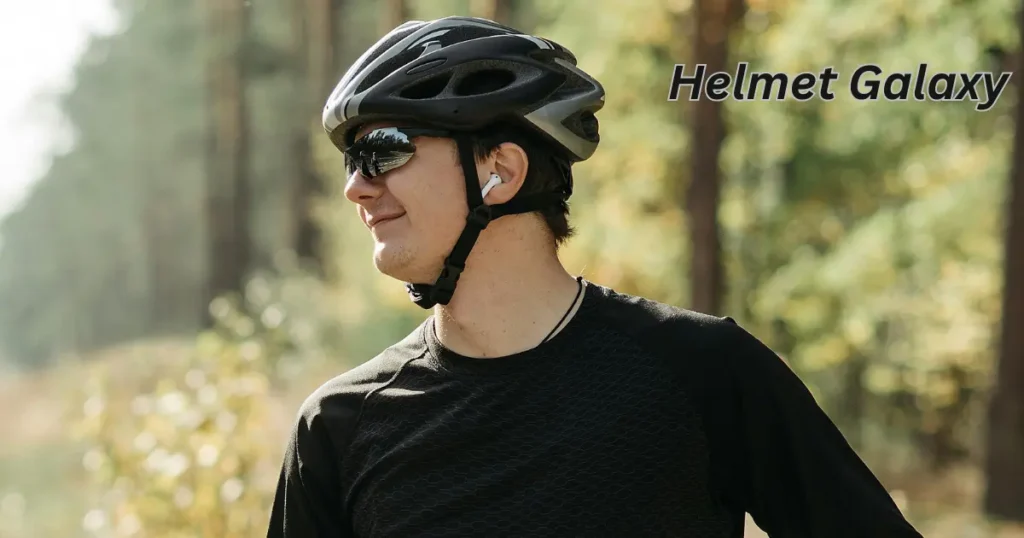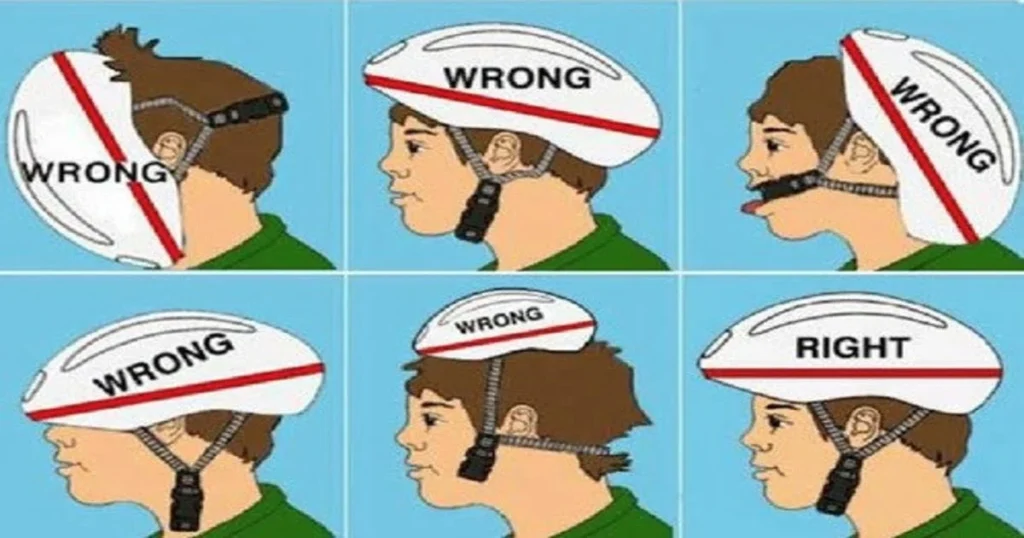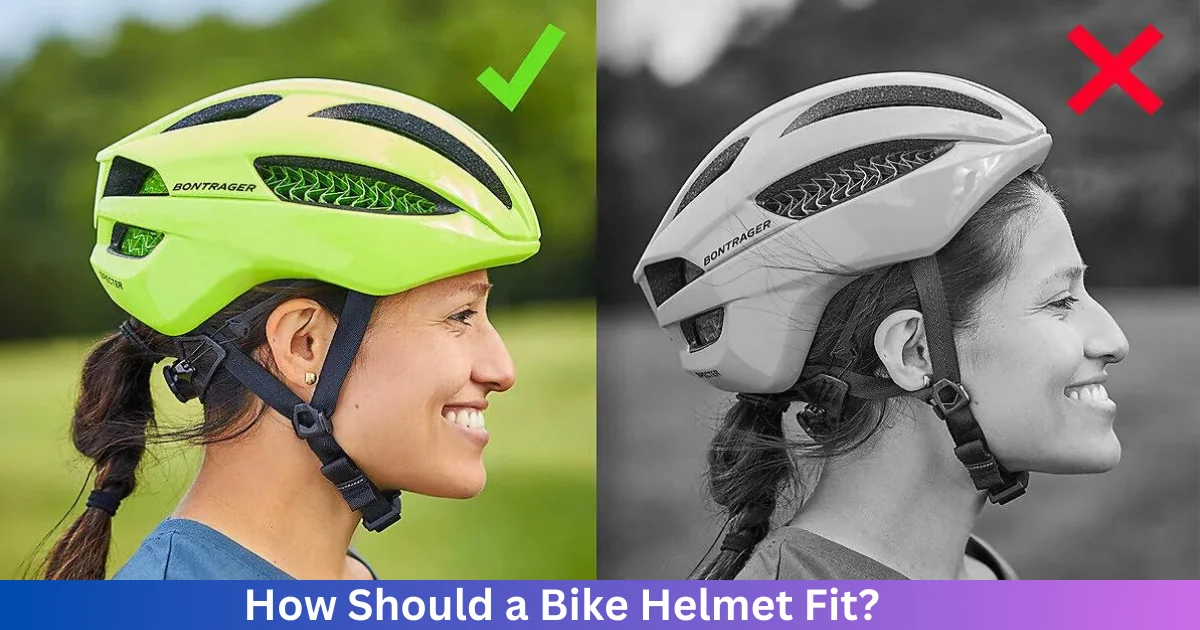Wearing a properly fitted bike helmet is absolutely essential for your safety while cycling. An ill-fitting head protector offers compromised protection and increases your risk of head injury in the event of an accident.
According to research, helmets can reduce the risk of head injury by up to 85%. However, the level of protection offered by a head protector greatly depends on how well it fits the wearer.
A helmet that is too large or sits improperly on your head will likely move or come off on impact, rendering it ineffective. Similarly, a head protector that is uncomfortably tight can also compromise safety by discouraging proper wear.
Follow these bike helmet fitting guidelines to ensure your helmet fits correctly and safely:
Positioning
- The helmet should sit level on your head and low on your forehead, with 1-2 finger widths (about an inch) of space between the helmet and your eyebrows. This ensures optimal protection of the forehead and front temple areas.
- The helmet straps must form a “V” shape directly under each ear. The point where the straps meet should be just below the ear lobe.
- The front of the helmet should sit squarely on your head and not tilt back. If the helmet tilts back, it will not protect your forehead properly.
- Avoid wearing hats or headbands under the helmet as these compromise the fit. Ponytails should sit low on the neck or tucked into the helmet.
Stabilty
- With the chinstrap securely fastened, shake your head from side to side and back and forth. There should be no movement of the helmet on the head.
- Grasp the helmet at the front and back and try to rotate it around. A still helmet indicates a stable fit.
- Ask someone to try and push or pull the helmet off your head. There should be no give.
Comfort and Coverage
- The helmet should feel snug but not uncomfortably tight. There should be no gaps between the padding and your head.
- Adjust the side and chin straps so the head protector feels securely fastened but not painfully tight. You should be able to fit a finger between the strap and your chin.
- The helmet should cover your forehead, the top of your head, and sit low on the back of your head. For full coverage, the front rim should sit about 1 inch above your eyebrows.
- The side straps should meet just below your ear lobes at a 45-degree angle. This prevents the head protector from sliding too far forward or backward.
- After adjusting the straps and ensuring a stable fit, finish by making minor adjustments so the helmet feels level, centered, and comfortable on your head.
Following these guidelines and taking a few minutes to properly adjust your helmet ensures the best fit and protection for a safe, enjoyable ride. As helmets come in different shapes and sizes, it is important to try on multiple options. Finding the right fit is well worth the effort – your life could depend on it!
How Do I Know if My Bike Helmet Fits Correctly?

Here are some key signs that indicate your bike helmet fits properly:
It Feels Snug but Not Too Tight
The helmet should feel comfortably snug all around your head. There should be no gaps between the foam padding and your head. However, it should not feel painfully tight. Adjust the chin straps and sizing pads as needed to fine tune the fit.
It Does Not Twist or Wobble
Grasp the front and back of the helmet and gently try to twist it from side to side. There should be minimal to no rotation against your head. Next, shake your head forwards and back – the head protector should stay put without wobbling.
The Front Rim Sits 1-2 Finger Widths Above Your Eyebrows
This ensures optimal coverage and protection of your forehead and front temple regions. The rim should sit about an inch above your eyebrows.
Straps Form a V Below Your Ears
The head protector straps should meet in a V shape right under your ear lobe. If the strap junction sits too far back or forward from this point, the head protector is prone to sliding out of position.
It Feels Level and Centered on Your Head
Visually check that the head protector looks evenly aligned and centered on your head, not tilted backward or off to one side. It should feel balanced and stable in all positions.
It Provides Full Coverage
A properly fitted helmet will cover your entire forehead, the crown of your head, and sit low on the back of your head. No sections of your head should be exposed.
Allows 2-Finger Widths Between Strap and Chin
With the chinstrap buckled, you should be able to comfortably fit two fingers between the strap and your chin. It should not dig into your skin.
Passes the Push & Shake Tests
Have someone try to push, pull or shake the head protector off your head. A still, stable head protector indicates a proper fit.
Take the time to gradually adjust all parts of the helmet until it checks all the above fit criteria. A correctly fitted head protector is absolutely vital for your safety on the bike.
Common Bike Helmet Fitting Issues and Solutions

The Helmet Tilts Backward
This compromises protection of your forehead and front temple region. Try tightening the rear stabilizer or adjusting the angle and position of the side straps. Ensure the front rim sits just above the eyebrows.
The Helmet Slides Forward or Backward
This indicates the side straps are not aligned properly under the ears. Loosen the straps and adjust the junction to sit right below the ear lobe, then re-tighten so it stays put.
The Helmet Wobbles or Twists Easily
If the helmet rotates against your head freely, tighten the side and chin straps incrementally until movement is minimized. Adjust the stabilizers and sizing pads to eliminate gaps.
The Helmet Sits Too High on the Forehead
This reduces visibility and protection. Try adjusting the front rim 1-2 finger widths above the eyebrows or adjusting the angle of the side straps to bring it lower on your forehead.
The Helmet Sits Too Low on the Forehead
This compromises protection of the upper forehead. Adjust the side straps to raise the front rim to sit about an inch above your eyebrows.
Uncomfortable Pressure Points
Alter the angle and position of the straps, adjust the stabilizers, or swap out the sizing pads to alleviate discomfort. There should be no painful pressure points.
Exposed Areas Without Coverage
If sections like the forehead, temples or neck are exposed, try adjusting the front rim lower on your forehead or swapping to smaller sizing pads to eliminate gaps in coverage.
Gradually making fit adjustments and taking the time to get the ideal snug fit makes a big difference in safety. Visit a bike shop for help getting a tailored fit. And be sure to regularly recheck the fit as helmets can shift over time. A properly fitted head protector is one you’ll be happy and comfortable wearing every ride.
Helmet Fit by Head Size
| Head Circumference | Helmet Size |
|---|---|
| 20 – 21.75 inches | Small |
| 21.75 – 23.25 inches | Medium |
| 23.25 – 24.75 inches | Large |
| 24.75+ inches | X-Large |
How to Adjust Your Bike Helmet for a Proper Fit

Adjusting your bike helmet is crucial to achieve a custom, secure fit. Follow these tips:
Adjust the Side Straps
- Loosen the sliders where the straps connect to the head protector and position the junction slightly below and forward of each ear.
- Tighten the sliders so the straps form a “V” meeting just under the ear lobe.
- Ensure the straps lie flat against the skin and are not twisted.
Adjust the Stabilizers
- Stabilizers are the plastic bands that wrap around the back of your head.
- Tighten or loosen these to eliminate any gaps between the head protector padding and your head.
Adjust the Chin Strap
- Center the chin clip under your chin and buckle the strap.
- Tighten or loosen so you can fit one or two fingers between the strap and chin.
Use the Sizing Pads
- Most helmets come with removable sizing pads of varying thicknesses.
- Place thicker pads in areas that feel loose, and thinner pads in tight spots.
- Remove pads if the head protector feels uncomfortably tight overall.
Position the Front Rim
- Loosen the straps and slide the helmet forward or back to position the front rim about 1 inch above the eyebrows.
Take the time to gradually make adjustments, regularly reassess the fit and stability, and test the fit by shaking your head with the head protector on. Getting the perfect personalized fit takes a bit of time and effort, but it’s worth it for your safety and comfort.
5 Common
How far should the helmet sit above my eyebrows?
The front rim of the head protector should sit about 1-2 finger widths (about 1 inch) above your eyebrows. This ensures optimal coverage and protection of your forehead and front temple regions.
How tight should the chin strap be?
With the strap buckled, you should be able to comfortably fit one or two fingers between the strap and your chin. It should not be so tight that it digs into your skin.
What is the proper positioning for the helmet straps?
The helmet straps should meet in a “V” shape just below each ear lobe. If the strap junction sits too far forward or backward from this point, it can cause the head protector to slide out of position.
How can I eliminate pressure points inside the helmet?
Pressure points and discomfort can be alleviated by adjusting the stabilizers, swapping out sizing pads, or altering the strap angles. There should be no painful contact points inside a properly fitted head protector.
How do I know when the helmet fits correctly?
Signs of a proper fit include:
- Feels snug but not too tight
- Does not twist or wobble on your head
- Covers your entire forehead and the crown of your head
- Allows space to fit two fingers between strap and chin
- Front rim sits 1 inch above eyebrows
- Straps form a V below ears
- Passes the push and shake tests
Taking the time to gradually adjust all parts of the head protector and doing regular rechecks ensures the safest, most comfortable fit for your unique head size and shape.
Conclusion
In summary, properly fitting a bike head protector is absolutely vital for maximizing safety while cycling. Follow the guidelines on optimal positioning, stability, coverage and comfort.
Adjust the straps, stabilizers and sizing pads incrementally until the head protector feels snug, stable and centered on your head. It should not move or twist when shook or pushed yet allow space to fit two fingers between the chin strap and chin.
Visually check that the head protector rim sits about an inch above the eyebrows to fully cover the forehead. The straps should meet in a V shape just under the ear lobes to prevent sliding. Eliminate any gaps in coverage and uncomfortable pressure points.
Take the time to achieve a customized fit for your head and reassess the fit regularly. A properly fitted head protector that you are happy wearing is essential protection for safe, enjoyable cycling.
